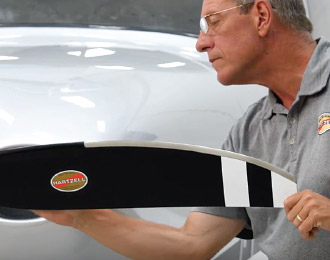
Any aircraft owner will tell you that owning an airplane isn’t exactly cheap. Besides purchasing the airplane, you’ll also need to pay for insurance, fuel, maintenance, and a place to store it. However, any aircraft owner will also tell you that ownership is a priceless experience. After all, when you own your own airplane, you’ll have the freedom to fly anywhere you want to go, any time you want.
So, how can pilots enjoy owning an aircraft in the most cost-effective way? One of the easiest ways to minimize the costs of aircraft ownership is by performing minor preventative maintenance tasks as permitted by the FAA. Not only does routine preventative maintenance keep your aircraft operating at top shape, but spending time inspecting and working on your aircraft may help you identify any emerging problems before they escalate into more expensive repairs. And perhaps most importantly, participating in preventative maintenance allows pilots to gain a deeper understanding of how their aircraft operates, which ultimately promote safer flying.
There are many proactive things pilots can do to save money on maintenance. Here’s a short list of some of the basic preventative maintenance tasks certificated pilots can complete under the conditions authorized by FAR Part 43. When doing preventative maintenance, remember to record all required entries in the logbook.
Oil changes: It can pay to take good care of your engine. Oil in aircraft engines can become contaminated over time by carbon, metals, water, acids, dust, dirt, debris, and other contaminants from the engine and the environment. Allowing these substances to build up can harm the engine and reduce its service life. As a general rule of thumb, an aircraft’s engine oil needs to be changed every 50 hours or 4 to 6 months, whichever comes first, although the exact interval will depend on the type of aircraft and how it’s operated.
Change tires: Taking care of your aircraft’s tires promotes safety and ensures a longer life for the tires, which can save money on operating costs. Be sure your tires are properly inflated before each flight, and be aware of how temperature can affect tire pressure. With the proper instruction and tools, owners and operators are permitted to change aircraft tires as preventative maintenance, which can save time and money.
Replace or service batteries: Much like a car battery, an aircraft’s battery is susceptible to damage from weather, overuse, and corrosion. Luckily, aircraft owners and operators are permitted to replace or service batteries under FAR Part 43. If you’ve replaced an automotive battery before, the process is relatively similar.
Clean and wax the aircraft: It sounds simple enough, but keeping your aircraft as clean as possible is an often-overlooked preventative maintenance task. Dirt and other grimy substances can work their way into seams and around rivets, causing corrosion or damaging seals. Not only will a cleaned, waxed aircraft look better on the runway, but it can also protect the airframe from scratches and abrasions. Don’t forget about the interior, either. Keep fabric and leather seats clean and clutter-free. Make sure your instrument panel stays clean and grease-free to prevent costly damage.
Inspect and clean the propeller: Visually inspecting your aircraft’s propeller can help you detect any signs of developing damage or erosion before they become serious problems. Conduct pre-flight inspections and be sure any signs of damage are addressed by an expert right away. Cleaning dirt, debris, and bugs from the surface of your propeller blades is another easy preventative task. All you need is a gentle dish soap and water to effectively clean your propeller. Just be sure any liquid doesn’t run back into the propeller hub, as it could damage a seal. At Hartzell, we’ve developed a series of video tutorials to help pilots perform proper visual inspections and identify corrosion or other damage.
By engaging in proper preventative maintenance, pilots can reduce costs, save time, and protect the value of their aircraft. To verify which preventative maintenance tasks you can and can’t do on your airplane, review CFR 14, Part 43 and Part 91 Subpart E. You can find all the CFRs online at www.ecfr.gov.